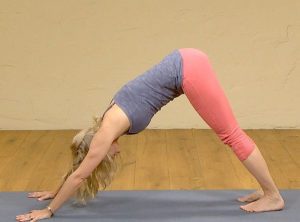
To learn how to do the handstand for beginners you must start at the beginning. A spotter or someone to watch will help you safely get into and out the handstand. Once you are able to balance and align properly, handstands will be more efficient and require less effort. Mental fear can be a major obstacle to this exercise. This could lead to injury.
Getting started
For beginners, a softly padded area is necessary to start a handstand. It is likely that you will fall several times before you achieve the correct balance. Grass or a soft surface can help you land softly. It is a good idea to practice in an open area, so you don't get hurt. You may find it helpful to have a friend hold your legs while you practice.
In practice, bend forward and keep your arms straight. Place your feet about two to three feet from the wall. Now lift one leg off of the ground. Now, lift your legs off the ground and push them up towards the ceiling. You should hold this position as long as you can, while trying to keep your balance. You can practice the technique for several days to make it second nature. Handstands for beginners require practice and patience.
Getting into a handstand

Before you attempt to perform a handstand as a beginner, there are a few things you should consider. First, you have to be able to balance. Although it is easy to believe that a person's inability to perform a handstand because of their poor balance, this is wrong. An individual's inability to perform a handstand is often due to poor balance. To overcome this issue, you should focus on a few important elements.
Second, learn how to bail. If you have questions, a friend is able to help. When you first learn to get into a handstand, you will naturally feel the urge to turn around. While you are doing this, your hand should be extended forward and your feet should fall to one side. This will make it look like a slow cartwheel. However, gymnasts can make it look beautiful and call this a “pirouette”.
You can do a handstand by yourself without having to have a spotter.
Using a wall to hold onto while getting into a handstand is a great way to avoid painful falls. To avoid hitting your head on the wall, keep your shoulders and head down. This will prevent you from landing on your toes. You should always have a spotter with you when doing this exercise. Here are some helpful tips for getting started. Begin by standing close to a wall approximately four to five feet from you.
You must ensure that your hands are not too close to the wall. Don't stand too close to the wall and don't kick too hard into your lunge. Your kick should provide enough power to lift you up. Kicking too far from the side can cause you hips to twist and make it hard to do the handstand. When starting out, use a spotter who will stay close enough to provide assistance.
Standing up from a handstand

It is a common mistake for beginners when learning to do handstands. They think it is impossible. It's not easy, and it's quite doable once you have good alignment and balance. Once you've achieved this, you can then focus on developing your arm strength and back strength to get out of a handstand. These are some tips to help you out of a handstand and increase your confidence in your body.
You will be starting in a handstand with your palms flattened on the floor. Bend the second knuckle of the middle finger while keeping the first knuckle flat on the floor. Make sure your palms are facing up, and the top of your feet are pointing up. Push your palms towards the floor as you fall forward. Then, shift your weight forward by shifting your bodyweight. You can then continue walking towards the wall by moving your feet.
FAQ
How can I improve my mental wellbeing?
Everybody needs to be healthy, especially if they are under stress at work, school or home. It is important to get regular exercise, eat healthy foods, sleep well, spend quality time with your loved ones, and to take care of your mental health. Exercise can increase endorphins, which make us happier. Good nutrition is essential for a healthy body. Good sleep gives us energy all day. Spending quality times with loved one improves relationships and reduces stress.
What does mental health have to do with our daily lives?
Everyone is affected by mental illness at one time or another. The main difference between those who suffer from mental illness and others is that they don't seek help for it. If you feel like something is wrong, talk to someone about it. There are many ways to deal with depression, anxiety, stress, etc., such as therapy, medication, exercise, diet, meditation, and other methods.
Why is mental health so important?
Mental health is vital for everyone. If you don't feel well mentally, you won't be able to do anything else. So, it is essential to maintain a healthy mind.
When our minds aren't in the best place, our bodies start to show signs and symptoms of stress. This could cause health problems, such as stomach aches, backaches, headaches, and other issues. Our bodies and minds must be well looked after.
What should you do if your mental health is in crisis?
When you have any kind of mental health problem, it's important to seek treatment. It is possible that you have been subject to abuse or trauma in the past. This could have affected your perception of yourself.
Another type of mental illness you might be experiencing is an addiction or eating disorder. These disorders can have a devastating effect on your life.
They shouldn't be dealt with on their own. Instead, talk to someone who can help you. These challenges can be overcome with the help of a professional therapist.
Why is it so important to improve our emotional health?
Emotional health is essential for happiness and well-being. If you don't feel emotionally healthy, you won't be able to perform at your best. Depression can make it difficult for people to perform at their best. These people may also suffer from anxiety, panic attacks as well as insomnia. These conditions can be successfully managed with medication and therapy.
Why is students' mental health important?
Students' mental health is crucial because it allows them to be focused on school and excel academically. You won't perform well at school if you don't feel like yourself. Depression can lead to students missing class and poor grades. This could lead to students dropping out of high schools and eventually going to college.
You should talk to your parents and teachers if you have depression. They will help you get the treatment you need.
Not everyone with depression requires medication. Talk therapy is effective for many people. Counselors are a good option if you want to get help.
Statistics
- Similarly, while there is some agreement about the boundaries of typical mental disorders 2, there is likely less agreement about those for positive mental health. (ncbi.nlm.nih.gov)
- Neuropsychiatric diseases are the leading cause of death and disability in the U.S., accounting for 18.7 percent of all years of potential lifespan loss and premature mortality.
- More than 50% will be diagnosed with a mental illness or disorder at some point in their lifetime.3 (cdc.gov)
- Appropriate nutrition and exercise are likely among the most efficacious and cost-effective positive mental health interventions. (ncbi.nlm.nih.gov)
- It means no drinking any alcoholic beverages and no taking any drugs that aren't 100% natural.
External Links
How To
What is the best way to improve your mental health?
Mental health refers both to your mind and your emotional well-being. It influences how you think, feel, act, relate, relate, sleep and eat.
Mental health is an important topic for everyone. Mental health is often associated with depression. Depression is a serious illness that affects millions each year.
The term clinical depression is used to describe depression. It requires treatment by a physician. However, there are many types of depression, including milder forms that do not require medical intervention.
According to the National Institute of Mental Health (NIMH), depression can be described as "a common mood disorder characterized in a depressed mood most of a day almost every day, loss of interests or pleasures in almost all activities and feelings of guilt or low-self-worth, disturbed sleeping or appetite, poor coordination, thoughts of death or suicidal thoughts or actions."
There are many ways that people experience depression. You may feel hopeless, depressed, irritable or anxious. Others might feel numb or empty, restless and agitated, angry, fearful and/or scared. Other people may feel nothing.
Depression is treatable. There are many treatments for depression, including medication, psychotherapy as well as diet and lifestyle modifications that can help. Depression, if left untreated can cause issues at home, school, work and relationships.
Depression is more common among women than men, although men and boys are affected too. Depression is the leading cause for disability worldwide in men and women aged 15-44 years.